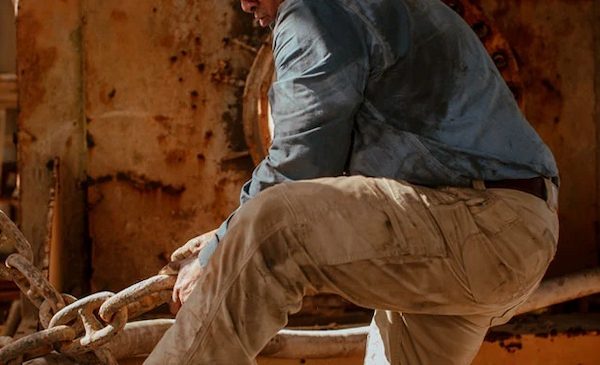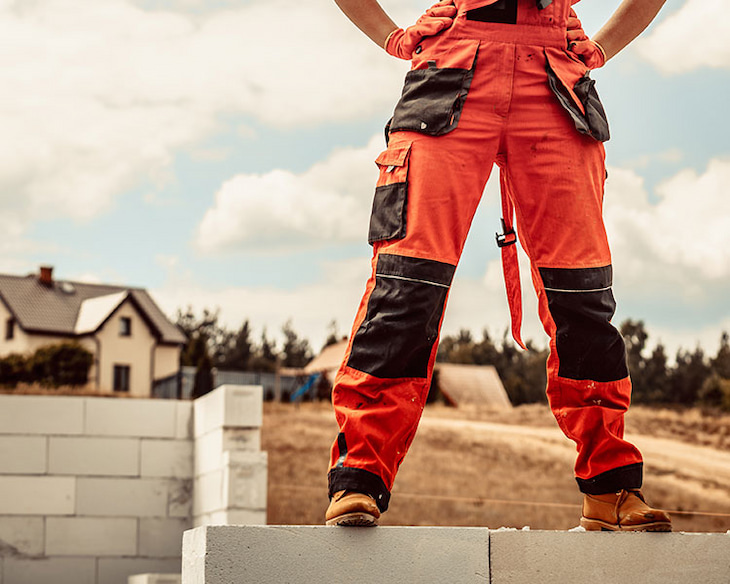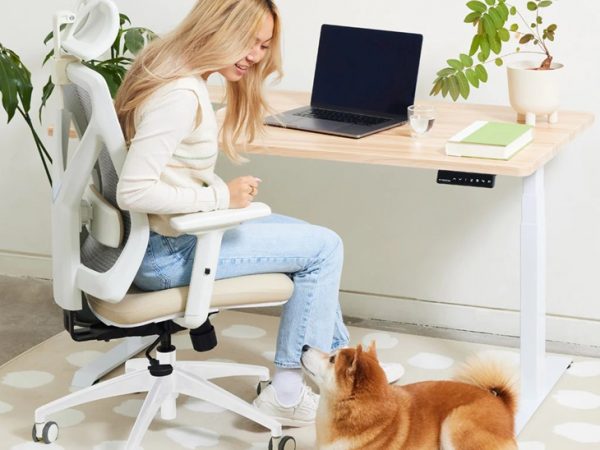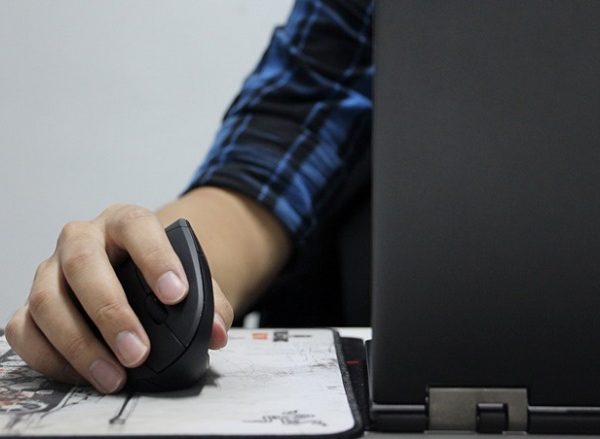30
Sep

Where Protection Meets Agility: A Simple Guide to Workwear Pants
Choosing pants for work isn’t the same as buying your everyday pair of jeans. There are many factors to consider. The material must endure heavy wear and tear, the fit and style should allow for easy movement, and the features must be both practical and efficient. To make selecting workwear pants easier, we’ve put together this simple guide to help you find the perfect pair.
Types
Boost your productivity at work with a pair of durable and functional trousers. There’s a broad range of workwear pants available to suit different industries and job requirements. But choosing the right pair can be a daunting task. The key is to start by assessing what you need most from your work pants—then match the material, features, and fit to your specific needs. Fortunately, with such a wide variety available, you’ll likely find your ideal pair in no time.
Carpenter trousers are often constructed of denim or cotton duck and have numerous tool pockets as well as a hammer loop. Carpenter pants are designed with a loose fit to allow for movement and flexibility, as well as strengthened tool belt loops. They may also include built-in tool pouches, eliminating the need for a tool belt.
Construction trousers must be highly durable, useful, and safe. As a result, construction work pants are often made of durable cotton duck canvas with sewn-on belt loops, bartacks, and reinforced knees. They also include plenty of pockets for keeping things close at hand.
In terms of materials, mechanics choose trousers made of a cotton-polyester combination- cotton for ventilation, polyester for hardness and stain resistance. Ample pockets are a must, as is the use of Spandex fabric and a gusseted crotch for enhanced manoeuvrability.
Dungarees are a classic work type made of denim that is suitable for a variety of jobs. They’re made of strong cotton denim that’s extremely durable, and designs come with a variety of features including cargo pockets, articulated knees, crotch gussets, mobile phone pockets, and more.
Fit

The fit of your work trousers is a matter of personal preference, but just like choosing the right fabric, the wrong fit can ruin your day. It’s important to understand the various fits available and choose one that’s appropriate for your job conditions.
Relaxed-fit work trousers are designed for comfort. They offer extra room in the seat, thighs, and legs, reducing the stiffness that often comes with tighter fits. However, some workers find the bagginess of relaxed-fit trousers less appealing, so keep this in mind when shopping.
Regular-fit pants for work have less leeway in the seat and thigh than relaxed-fit pairs. If you want to avoid baggy pants, original-fit work pants may be a good option. They’re easy to move around in without becoming too tight.
When people hear the term “slim fit,” they usually think of skinny pants. Slim-fit work pants are not exactly like this; they merely provide a tighter, more efficient fit in the legs. They’re not too tight, though, and the leg openings should allow you to wear your work boots over them comfortably. If you prefer a more modern fit, especially if you don’t want baggy work pants, slim-fit designs are the way to go.
Material Selection
Work trousers aren’t typically made from a single fabric. Instead, they are often constructed from a blend of materials to harness the advantages of each. This helps create pants that are durable, comfortable, and suited for specific job requirements.
Cotton is one of the most widely used natural fibres in clothing, so it’s no surprise that it features heavily in workwear. Cotton work trousers are extremely breathable, making them ideal for staying comfortable throughout the day. It’s also a heavy material, which provides warmth in cooler conditions. Cotton is often the base for fabrics such as denim and duck.
Denim, the fabric behind blue jeans, is a tightly woven cotton material renowned for its durability. While denim can be stiff and may cause discomfort initially, its robust, hard-wearing nature makes it a popular choice for those who need tough, long-lasting work trousers. Denim is sometimes blended with other fabrics to enhance comfort without compromising its strength.
Cotton duck is another tightly woven cotton fabric, similar to denim but much tougher. It’s a canvas material used in products like hammocks and sails. Unlike denim, which softens over time, cotton duck retains its strength and structure, making it highly tear-resistant and great for work trousers that need to withstand harsh environments. It also offers excellent wind protection.
Polyester is a durable, synthetic material that holds up well against wear and tear. It dries quickly and is highly resistant to stains, making it ideal for particularly messy jobs. Polyester is also wrinkle-resistant, ensuring that you look neat and professional on the job.
While Spandex is used sparingly in work trousers, its ability to stretch and return to its original shape makes it an important component. Often blended with cotton or polyester, it adds flexibility and mobility, particularly in high-movement areas like the waistband. This can greatly enhance comfort and ease of movement while working.
Cordura is known for its exceptional durability and abrasion resistance. Often used as reinforcement in high-wear areas such as the knees and seat, it protects the trousers from damage and extends their lifespan, making it an excellent choice for those working in rough conditions.
12
Dec

Dynamic Sitting: Introduction of The Ergonomic Stool
Most of us know that typical office work is constant sitting for eight or more hours every day where the lunch break is an absolute relief for the stiff neck, blurry eyes and potential headache. The different types of ergonomic chairs changed the situation for the better for so many. But it’s not only about sitting.
Employees who spend most of their time upright, in one position, also have back pain, swollen legs and rigid necks. So, how can their problem be solved?
Read More →08
Jul

Ergonomic Forearm Rest – Give Your Hard-Working Arms the Love They Deserve
When people talk about ergonomic office furniture, most of them are thinking about chairs and tables. Yes, they are certainly the most important ones, but ergonomic equipment includes is a wide range of items all designed to make working in the office more comfortable and healthier. One piece that should also be found in every office is the ergonomic forearm rest. There are three main reasons why your arms need support. First, to ease the load on your back by the weight of your hand and arms, to reduce the strain on your muscles and to provide you with more precision and strength for the work that needs to be done. Read More →
15
May

A Guide Creating Ergonomic Office, and the Benefits that Follow
To everyone not working in the office, it might seem like the ideal job, but from the perspective of the office worker, it’s not as easy – no, not even the sitting part! It’s no secret the sedentary lifestyle can bring about to a great deal of discomfort, so imagine what sitting eight hours per day can do to the body.
Then again, it’s not just the chair that can be the culprit of pain and discomfort, given that we also get to spend a great deal of time working on the computer, so the mouse can be to blame too which is where vertical ergonomic mouse can come in handy. Pair that with ergonomic chair and you can count on enough lumbar support and reduction of the tension in the neck and back muscles – no more slouching!
Unlike the typical mouse, the ergonomic mouse is designed to improve the user’s comfort, thanks to the reduction of the angle between the wrist and hand, with a shape that provides relaxing grip, and longer buttons for ease of use. Read More →
23
Apr

A Simple Guide to Equipping an Executive/Managerial Office
In the digital age, having a face-to-face approach to clients as a business can bear many benefits, and prove to be a much more successful approach than conducting business online by exchanging emails or whatnot. That being said, the furniture and décor of an office, especially your own office as an executive can heavily influence a client’s perception of your business. First impressions are key, and that’s a fact, and interior design can contribute towards making a great first impression.
If your business is equipped with some more traditional furniture, you might want to consider switching to a more contemporary design. But it’s not just potential clients you should try to impress, but also partners and employees. Having a well-equipped office as an executive yourself can be extremely beneficial in attracting partners and employees. With that said, you should consider buying an executive desk that’s constructed from quality materials, which is functional and eye-appealing as well.
In today’s modern office environment, the desk executive managers use can be the center of attention. It’s where many important meetings for the business take place, as managers work with other team members and heads of department. The desk is typically larger than usual for these sessions, and it allows for more people to work at the same time.
But as aforementioned, it’s also a matter of image. The desk executive managers use tend to be made of higher quality materials than your typical office desk, and they’re usually larger in size and have more features than regular desks. They make the environment feel more luxurious, and when deals are negotiated on it, it acts as a feature and benefit for people in managerial positions.
When considering the budget for your executive desk, don’t forget to take into account the cost of chairs. Having ergonomic chairs increases the comfort and the productivity levels. Executive office chairs are oftentimes made of leather and they look quite glamorous. However, you should also consider getting a few additional chairs for everybody that may need to come into the office and have a place to sit.
You can also opt to get a package deal, and have your entire office fitted with a desk, cabinets and chairs that complement each other well. Some suites can include wardrobes and box pedestals. Suites make the ideal out of the box solution for both new and old office spaces, as they come with additional filling cabinets and storage space.





